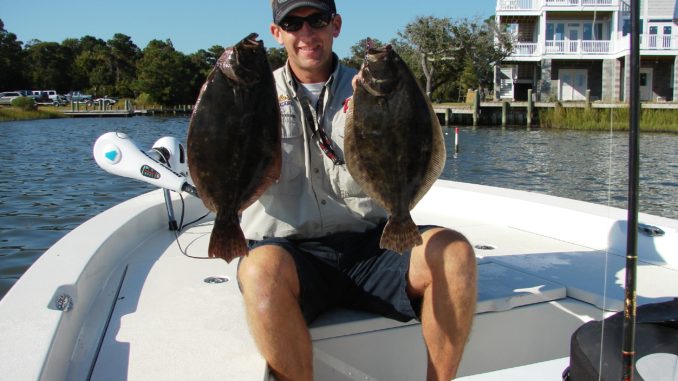
Casting accuracy is a key to taking flounder around Swansboro-area docks
As he eased up to a dock on the Intracoastal Waterway a little south of Swansboro, Capt. Rick Patterson of Cape Carteret’s Cape Crusader Charters explained it was a special one, that he really expected it to be holding fish.
The dock was constructed using hurricane anchors and guide wires to secure it during storms; in addition to holding the dock in place, the guide wires gave oysters places to attach and grow under it; the oyster growth gave baitfish places to hide, and Patterson regularly caught flounder and red drum that had showed up to feed on the baitfish.
Once in place, Patterson slipped the point of a wide-gap, Kahle-style hook through a mullet minnow and explained that a cast needed to at least reach the edge of the dock and even splash down a few inches under it but warned that casting very far under it would result in a snag and probably a lost rig.
His cast showed plenty of practice and landed right at the edge, and in less than a minute, Patterson’s rod tip bobbed once and then went down. The fish immediately ran to the side, and he struck back to make sure of the hookset. The extra resistance caused the fish to turn and head back up the dock, then it passed it and rushed into open water.
“Man, that was close when it raced back up the dock,” Patterson said. “It’s tough to keep the line tight when one is running at you like that, but you’ve got to wind like crazy and try. If it had turned just a little and run under the dock, it could have cut the line on an oyster or barnacle.”
The fish tired and allowed Patterson to lead it to the boat, where he quickly scooped it up with a sweep of his landing net. It was the second red drum of the morning, a couple of big bonuses on a trip where flounder were the primary target.
As he released the mid-slot redfish, Patterson said, “Okay, let’s try it again. These drum are fun to catch, but the correct species is flounder. I’m going to slip another minnow on and try to catch one of them this time.”
The next cast landed immediately alongside the dock and it was joined on the other side of the dock by a second cast. In about a minute, the second line jumped once, then stopped.
“That looked like a flounder bite,” Patterson said. “Did it just thump your bait and stop? Give it a little slack to allow it to turn the minnow and begin to swallow it without feeling any resistance. Let’s count to at least 10 pretty slowly.”
Finally Patterson said, “Okay, it should have the hook by now. Stick it and pull on it pretty hard to keep it coming and pull it away from the dock.”
The rod doubled over on the hookset and throbbed heavily as the fish on the other end tried to back up. It took a little line, but the drag was set tight enough that the fish was pulled out from under the dock. Realizing it was away from its cover, the fish tried to turn and head back, and the pressure on the line pulled the fish to the surface, where there was no mistaking the dark body and broad tail of a flounder.
The flounder took a little line while trying to get back to the cover of the dock but didn’t make it. Dropping the rod tip and pulling the other way led it farther away from the dock.
“Good job,” Patterson said. “I’ve got the net ready, but he’s probably going to make one more run for the dock before he gives up. Don’t tighten your drag, but don’t let him get there”
The flounder made the surge towards the dock, but it was tired and was turned out towards the boat and waiting net. Patterson let it pass once and turn, then netted it as it swam toward the net — the proper way to net a fish because they don’t have a reverse gear to back out of a net, whereas they can swim out of it if the net is brought in from the rear or side.
Patterson pronounced the flounder a keeper without even measuring it and pitched another mullet minnow toward the same spot, explaining that once you find a flounder, others are usually nearby.
The flounder that bit next was almost a carbon copy of the first one, and after a battle of a few minutes, Patterson netted the fish, unhooked it and slipped it into the livewell.
One more flounder was in the livewell when Patterson moved to the next dock, which produced a fourth flounder.
“These couple of cool mornings in the past few weeks have the mullet minnows fired up and moving towards the inlets and then down the beach in the ocean,” Patterson said. “All the predator fish also feel the cool mornings and see it as a reminder to bulk up for the coming winter, so they are keying on the mullet minnows.
“I know it’s hard to think of winter when we’re fishing in shorts and shirtsleeves, but these fish are. Just about every species bulks up during the fall. That’s why the flounder are feeding and the redfish are so aggressive. The water has just started cooling and this is a great time to be fishing.”
Patterson’s first cast to the next dock produced another flounder, and he re-emphasized the importance of landing your cast immediately next to the dock or even slightly under it. He pointed out the guide wires on a couple of docks that were anchored to the bottom and building oysters and said a close cast was good on those docks, but it’s good to cast a little farther under docks wthat don’t have guide wires.
Patterson worked down a section of docks, taking time to cast everywhere along the end and downcurrent side of each doc, catching several more flounder and a few red drum.
Patterson said it is common to find reds and flounder under the same docks, because they eat a lot of the same things, especially mullet minnows, and they both hold in places where the current sweeps food past their noses. In the area around Bogue Inlet, the rising tide usually pushes some baitfish in, while the falling tide pushes them back towards the inlet. In the fall, a steady stream of small schools of mullet minnows is typically heading towards the inlet and the ocean beyond.
Patterson said the fish move to points and docks along the waterway and larger creeks, somehow knowing this is the place to come and feed on the buffet of minnows and shrimp moved along in the current.
Almost all of Patterson’s flounder are caught on a Carolina rig. He uses 6 1/2- to 7-foot Star spinning rods with a 3000 Penn Battle reel spooled with 15- to 20-pound braid for its lack of stretch, smaller diameter and strength. His leader is 18 to 24 inches of 25- to 30-pound fluorocarbon, tied to a 1/0 to 2/0 Eagle Claw heavy dute Kayle-style circle hook. He limits the travel of the sinker to about a foot by tying on a second swivel. This helps prevent tangling and allows for faster and easier replacement when a rig is broken off.
DESTINATION INFORMATION
HOW TO GET THERE — Swansboro is on NC 24 about 20 miles east of Jacksonville and 25 miles west of Morehead City. I-85, I-95, I-40 and US 17 all cross NC 24 somewhere in North Carolina. A public boat ramp is on NC 24 at Cedar Point, just east of Swansboro, and two more are Shell Rock Landing and Willis Landing off Queens Creek Road, which crosses NC 24 at Swansboro H.S. A free community ramp is on Emerald Isle a few miles east of the US 58 bridge, and Dudley’s Marina has a pay ramp on NC 24 just east of Swansboro.
WHEN TO GO — Flounder are found in the Swansboro area from May through October. Lots of smaller fish arrive in the spring, with larger fish moving in through the summer; most are keepers by August, and they bulk up in the fall. September usually features the best combination of numbers and size.
TACKLE/BAITS — A medium-light to medium-action spinning outfit is perfect for flounder, but baitcasting gear is just as good in the right hands. Go with a 6 1/2- to 7-foot rod and 300-class reels spooled with 15- to 20-pound braid. Use a Carolina rig with an 18- to 24-inch leader of 25- to 30-pound fluorocarbon to fish live baits. A 1/0 or 2/0 Kahle-style hook is preferred, and mullet minnows up to 5 inches long are the top bait, although small menhaden will also produce. Flounder are managed in North Carolina with a 15-inch size minimum and six-fish daily limit.
FISHING INFO/GUIDES — Capt. Rick Patterson, Cape Crusader Charters, 910-342-1513, www.capecrusadercharters.com; Dudley’s Marina, 252-393-2204, www.dudleysmarina.net; Nancy Lee Fishing Center, 252-354-3474, www.nancyleefishingcharters.com; The Reel Outdoors, 252-354-6692, www.thereeloutdoors.com. See also Guides and Charters in Classifieds.
ACCOMMODATIONS — There are several motels in the greater Swansboro area. Hampton Inn & Suites, Swansboro, 910-325-9000; Waterway Inn, Cedar Point, 252-393-8027; Best Western Plus Silver Creek, Cedar Point, 252- 393-9015; Parkerton Inn, Cape Carteret, 252-393-9000, www.parkertoninn.com; Swansboro Chamber of Commerce, 910-326-1174, www.swansborochamber.org.
MAPS — Capt. Segull’s Nautical Charts, 888-473-4855, www.captainsegullcharts.com; SeaLake Fishing Guides, 800-411-0185, www.thegoodspots.com; GMCO’s Chartbook of North Carolina, 888-420-6277, www.gmcomaps.com.

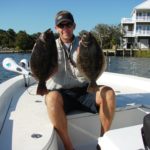
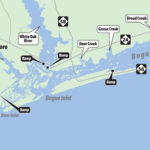
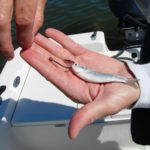
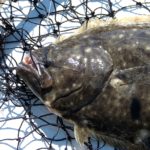

Be the first to comment